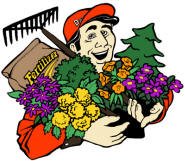In many of my presentations over the years I have repeatedly stressed the importance of a healthy, vibrant soil as it is the foundation necessary to grown any plant well.
On a broad scale, proper management of soils rests on the shoulders of farmers who are in essence the stewards of one of our most valuable resources.
Since the beginning of farming, turning or plowing the soil has been an accepted practice.
The working of the soil makes the sowing of seeds of a particular crop easier or cultivating the soil helps to eliminate weeds that would ordinarily out compete the crop.
While working the soil does yield good crops, the downside is that the loosened, exposed soil is subject to erosion from wind and rain.
Another problem with loosened soil is that the existing organic matter that is necessary for a healthy soil is more quickly depleted because of the increased air present.
The decomposing organic matter is also releasing carbon dioxide which scientists give credit for a warming of the climate.
Many farmers know and have experienced the formation of a plow pan in which a layer of soil becomes compressed by a plow pressing against it at a depth of six to seven inches below the surface.
This plow pan becomes so hard the roots of the crop cannot penetrate it and water cannot permeate through to the deeper subsoil creating poorly drained fields.
Today, the solution to many of the above problems is a system of farming called no-till.
No till farming is accomplished by killing off weed growth through an application of a herbicide such as Round-up followed by drilling the crop seed directly into the ground without otherwise disturbing the soil.
No-till farming results in less carbon dioxide production, less soil erosion, no creation of a hard plow pan and less work.
No-till farming saves time and money which are valuable commodities to frequently overworked and cash strapped farmers.
No-till farming has been practiced for a number of years and seems to be another farming practice that fosters more sustainability of the production of a wide variety of crops and it is a win for the farmer’s budget and environment while elevating the farmer’s status as a steward of the land.
Tom
Friday, August 28, 2009
Subscribe to:
Post Comments (Atom)




No comments:
Post a Comment